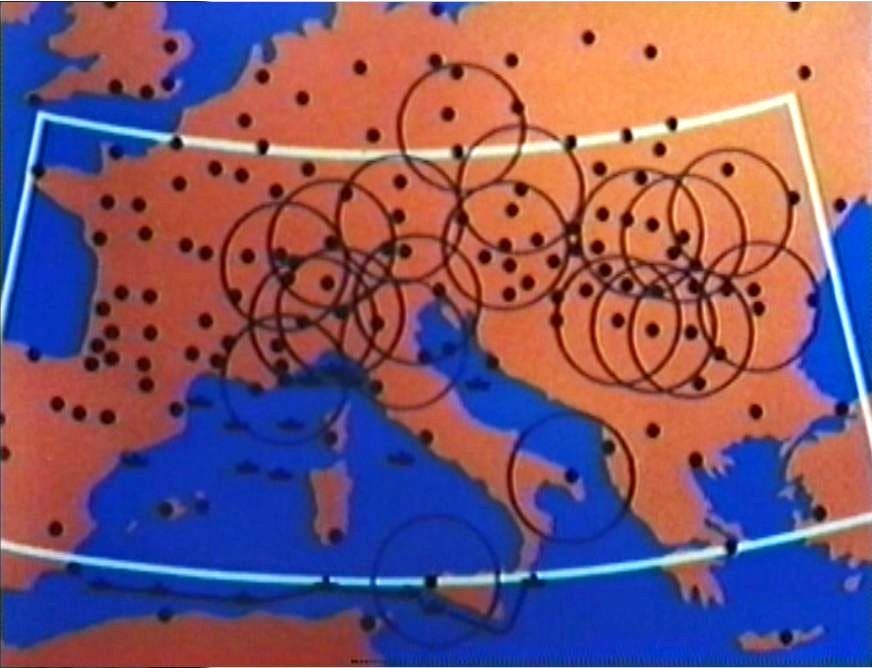ALPEX
Alpine Experiment
The last major field program of the Global Atmospheric Research Programme (GARP), the Alpine Experiment (ALPEX), addressed the problem of airflow over and around mountains and how the resultant features of such airflow affect the global, regional, and local weather. As with earlier GARP projects, it had been planned by a number of international groups established jointly by the International Council of Scientific Unions (ICSU) and the World Meteorological Organization (WMO). Twenty-nine nations participated in ALPEX.
SCIENTIFIC OBJECTIVES
The scientific objectives of ALPEX included the study of:
- The airflow, mass, and moisture fields over and around the mountain complex under various synoptic conditions
- The formation of cyclones in the lee of the mountain barrier with special emphasis on the subsynoptic nature of the associated processes
- The drag of the mountain complex upon the atmosphere, including (1) the vertical transport of horizontal momentum as a function of height near a mountain range, and (2) the dissipation of gravity-inertial wave energy over and downwind of the mountain range
- Local mountain winds such as the Foehn, Bora, and Mistral
- The role of sensible and latent heat flux over the Mediterranean Sea in conjunction with lee cyclogenesis
- The effects of differential radiative heating introduced by the mountain range
- The effect of mountain complexes on precipitation
- The physical processes responsible for the development of severe floods, wind storms, and storm surges
(Click Image for Full Resolution)
PROJECT OPERATIONS
The experiment domain included an "inner" and "outer" experiment area surrounding the Alpine massif in Southern Europe. There were two experiment periods: a low-intensity ALPEX Observational Period (AOP) from 1 September 1981 - 1 October 1982, and a high intensity Special Observing Period (SOP) during March and April 1982. During the SOP, a number of Intensive Observing Periods (IOP)s were designated because of high scientific interest in a particular meteorological phenomena. During IOPs, all or some of the ALPEX fixed observing systems were requested to take observations at higher frequencies. The ALPEX Operations Center (AOC) was located at and near the Geneva (Cointrin) Airport during the SOP with 170 participants at the AOC. The Alpine countries also established national ALPEX Operations Centers not only to handle their own national research programs but to assist in keeping the ALPEX observational systems in an operational state at all times.
FACILITIES
A total of 17 aircraft from 7 countries participated in ALPEX. They are summarized as follows:
| USA | NCAR Electra; NOAA P-3; Dropwindsondes were deployed from both aircraft |
| France | EERM Cessna 230; EERM Piper Aztec |
| Germany (Fed Republic of) | DLR Falcon 20; DLR ASK-16 Motor Gliders (4); University of Braunschweig Do28; University of Berlin Partenavia |
| Italy | FISBAT/IFA Partenavia; FISBAT Cessna 172 |
| Poland | Hydro-Meteo Institute of Tatra Mount A/C and glider |
| Switzerland | ETH/EIR ASK-16 Motor Glider |
| Czechoslovakia | A/C |
Other facilities participating in ALPEX were 23 additional rawinsonde stations supplementing the existing upper air network, arrays of about 60 microbarograph stations, 15 existing radars, and other existing European surface observations. In addition, ALPEX coordinated with MEDALPEX, which was the Mediterranean oceanographic component. Observations included tide gauges (36) , current meters (18), meteorological buoys (3), off shore platforms (5), and a variety of special observations (e.g. CTD/XBTs, upper air soundings, hydrologic and biological surveys, sea pollution, etc.) from 10 research vessels and additional ferries of opportunity as listed in the following table:
| Italy | R/V Marsili ; R/V Bannock ; Various Ferry Ships (Livorno to Bastia ferry route) |
| USSR | R/V Vodyanitsky ; R/V Victor Bugaev ; R/V Zodiac |
| Yugoslavia | R/V Bios ; R/V Vila Valebita |
| France | R/V Noroit ; R/V Corotneff |
| Spain | R/V Garcia Del Cid |
For more information on ALPEX, please see: ALPEX Overview.pdf
|
Airflow around the Alps.
|
Small-scale phenomena were measured by a gust probe system mounted on an extended boom.
|
One of the aircraft used in ALPEX
|
The 2-day operational forecast verified the Lee-Cyclone rather well with only small differences.
|
All photos copyright University Corporation for Atmospheric Research unless otherwise noted.




